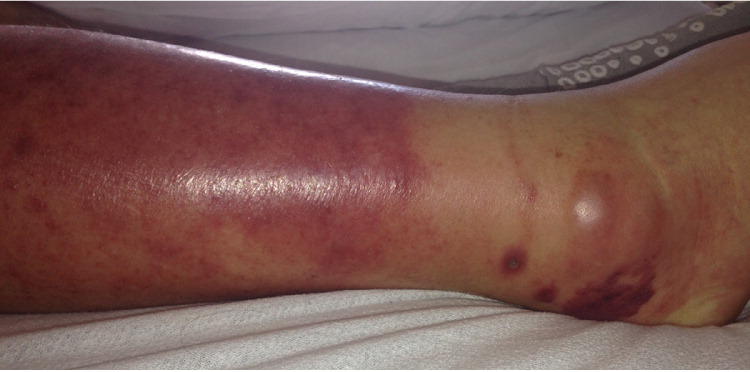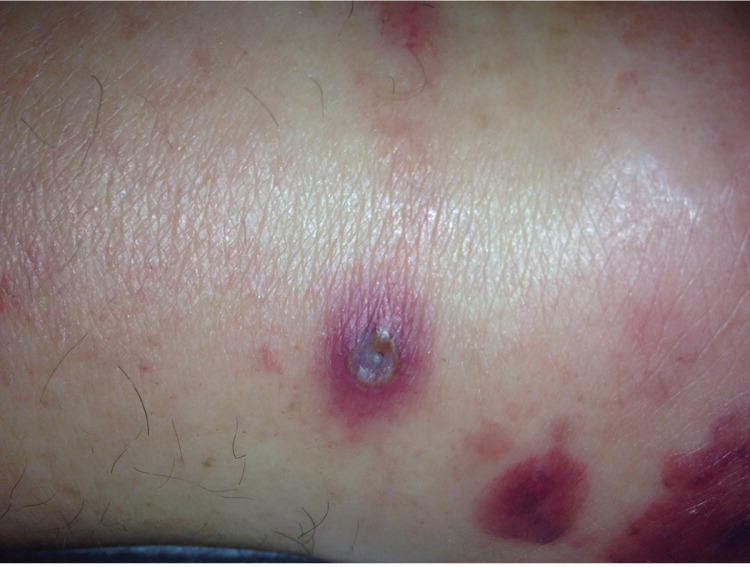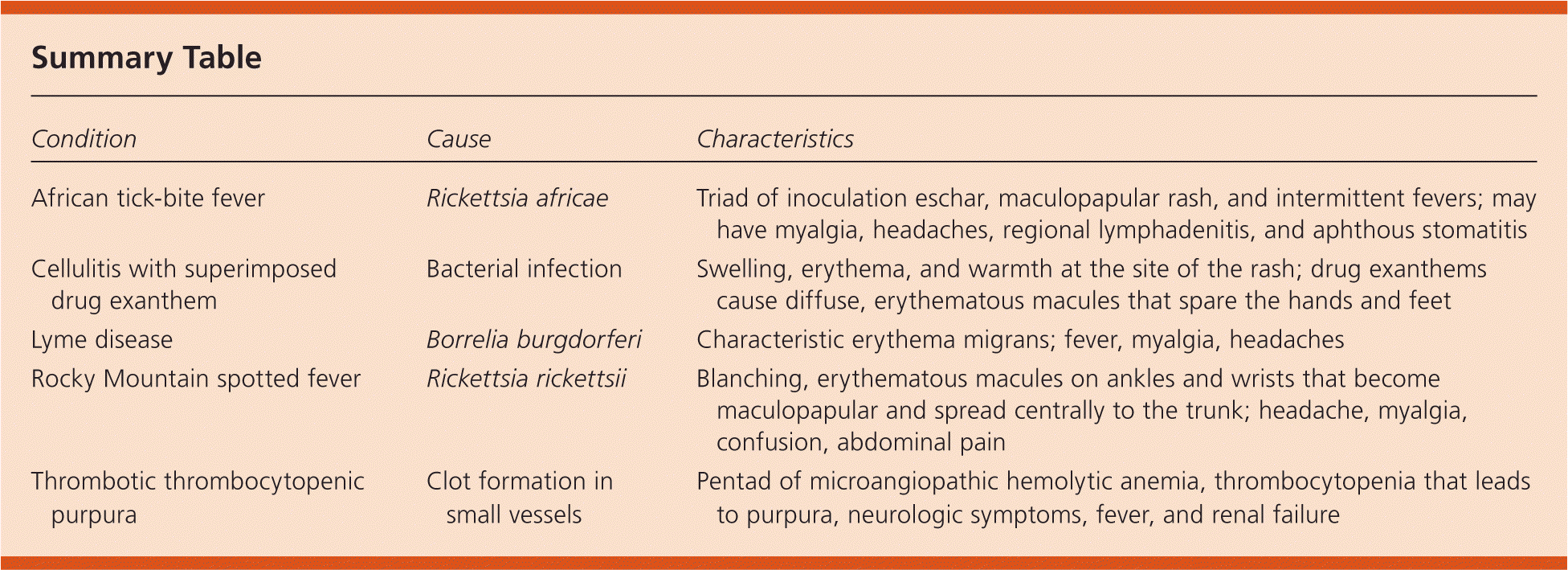
Am Fam Physician. 2016;93(12):1021-1024
Author disclosure: No relevant financial affiliations.
A 69-year-old man presented with unsteadiness, fever, chills, and a rash on his right lower extremity. He had recently returned from a trip to South Africa. He developed nausea and vomiting secondary to his disequilibrium, as well as blurry vision. After treatment with cephalexin (Keflex), ceftriaxone, and cefpodoxime, there was no improvement in the rash or associated symptoms. He did not develop leukocytosis. The patient was an arborist and had close contact with trees and other vegetation. While he was in South Africa, he went on safaris outside of urban areas.
On physical examination, the patient had a horizontal nystagmus with lateral gaze bilaterally. There were two aphthous ulcers on the buccal mucosa. There was a scattered, blanching maculopapular rash on his anterior and posterior trunk and his extremities. There was also a deeply erythematous, macular, conluent nonblanching rash on the right lower extremity that was circumferential (Figure 1). The rash was warm and tender to palpation. A satellite lesion appeared as a pustular eschar with a surrounding rim of erythema (Figure 2), superior to the right lateral malleolus.


Question
Discussion
The answer is A: African tick-bite fever. This can be a common diagnosis affecting those who travel to sub-Saharan Africa.1 It is caused by a Rickettsia africae infection transmitted by an Amblyomma tick bite. The ticks live on vegetation and hooved animals that are common on safaris and in the wild.2 The incidence of African tick-bite fever has been estimated at 4% to 5.3% in travelers to sub-Saharan Africa, and is most common in group travelers such as humanitarian workers, tourists on safari, and game hunters.3
Diagnosis is usually clinical, with the triad of an inoculation eschar, maculopapular rash, and intermittent fevers in a traveler to tick-endemic regions. Leukocyte counts are usually within normal limits. Other associated findings vary but may include myalgias, headaches, and in some cases, regional lymphadenitis.4 An uncommon but specific finding for African tick-bite fever is aphthous stomatitis, which this patient had.2
The satellite lesion is where the tick bite most likely occurred. Initially, it had the characteristic black eschar with a surrounding rim of erythema, but the area had become pustular by the time the picture was taken. The eschar can become a nidus for secondary infection.5 Punch biopsy can confirm the diagnosis using a polymerase chain reaction analysis of the inoculation eschar. Results may be negative after antibiotic treatment has been initiated. Doxycycline is typically effective.1
This patient was originally treated for cellulitis because of the warm, red rash with swelling.6 As the rash progressed, that diagnosis became less likely. Exanthematous drug eruptions can appear within two weeks of starting a medication and present as diffuse, erythematous macules that spare the hands and feet.7
Lyme disease is caused by Borrelia burgdorferi transmitted by an Ixodes tick bite. Erythema migrans, an expanding red rash, is the characteristic sign of Lyme disease. Patients with Lyme disease may also have fevers, myalgia, and headaches.8
Rocky Mountain spotted fever is an infection caused by Rickettsia rickettsii. Symptoms begin about one week after a bite from an infected tick. Symptoms include headache, myalgia, confusion, abdominal pain, and rash. The typical rash pattern is blanching, erythematous macules on the ankles and wrists that become maculopapular and spread centrally to the trunk.9
Thrombotic thrombocytopenic purpura is a coagulation disorder that results in clot formation in small vessels throughout the body. It presents as a pentad of microangiopathic hemolytic anemia, thrombocytopenia that leads to purpura, neurologic symptoms such as altered mental status, fever, and renal failure.10

| Condition | Cause | Characteristics |
|---|---|---|
| African tick-bite fever | Rickettsia africae | Triad of inoculation eschar, maculopapular rash, and intermittent fevers; may have myalgia, headaches, regional lymphadenitis, and aphthous stomatitis |
| Cellulitis with superimposed drug exanthem | Bacterial infection | Swelling, erythema, and warmth at the site of the rash; drug exanthems cause diffuse, erythematous macules that spare the hands and feet |
| Lyme disease | Borrelia burgdorferi | Characteristic erythema migrans; fever, myalgia, headaches |
| Rocky Mountain spotted fever | Rickettsia rickettsii | Blanching, erythematous macules on ankles and wrists that become maculopapular and spread centrally to the trunk; headache, myalgia, confusion, abdominal pain |
| Thrombotic thrombocytopenic purpura | Clot formation in small vessels | Pentad of microangiopathic hemolytic anemia, thrombocytopenia that leads to purpura, neurologic symptoms, fever, and renal failure |
